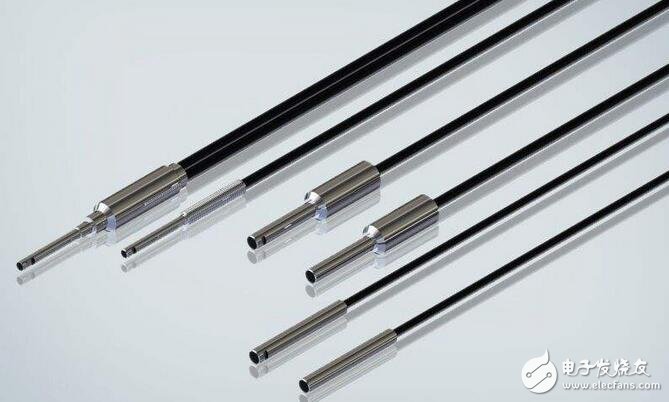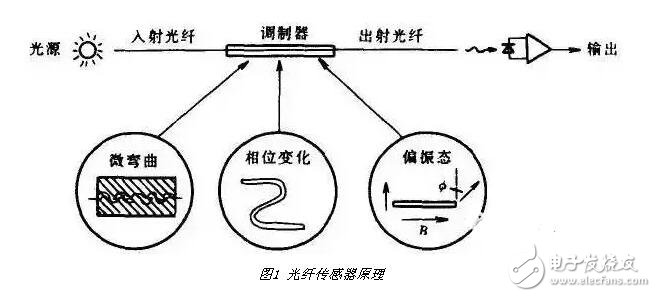
Privacy statement: Your privacy is very important to Us. Our company promises not to disclose your personal information to any external company with out your explicit permission.
Sensing technology is one of the fastest growing high technologies in the world today. The new sensor not only pursues high precision, large scale, high reliability, low power consumption and miniaturization, but also develops in the direction of integration, multi-function, intelligence and networking to meet various fields such as industry, agriculture, national defense and scientific research. demand. Fiber optic sensing technology was rapidly developed in the 1970s with the development of fiber optic technology and optical communication technology. It represents the development trend of a new generation of sensing technology. The fiber sensor industry has been recognized as one of the most promising high-tech industries at home and abroad. It has attracted the attention of the world with its high technology content, good economic efficiency, strong penetration ability and broad market prospects.
The earliest appearance of optical fiber was used to transmit light. After the low-loss fiber was produced in the early 1970s, the fiber was used for long-distance transmission of information, which is the cornerstone of fiber-optic communication. It is also an exaggeration to say that fiber is also modern information. The cornerstone of society. Since the optical fiber can not only serve as a transmission medium for light waves, but also the characteristic parameters (amplitude, phase, polarization state, wavelength, etc.) of the light wave propagating in the optical fiber may be due to external factors (such as temperature, pressure, strain, vibration, sound, magnetic field, refractive index). Indirect or direct changes in the effects of, distortion, etc., by analyzing these changes, some properties of the external action can be obtained, so that the optical fiber can be used as a sensor element to detect various physical quantities, chemical quantities, and biomass. The basic principle of fiber optic sensors.

The basic structure of the fiber sensor consists of a light source, a transmission fiber, and a light detecting portion. Considering that fiber transmission is already very simple, usually a complete set of fiber optic sensors consists mainly of sensors and demodulators. The light emitted by the light source is coupled into the optical fiber and enters the modulation region through the optical fiber; the externally measured parameter acts on the optical signal entering the modulation region in the modulation region to make optical properties such as light intensity, wavelength, frequency, phase, polarization state, etc. The change becomes the modulated signal light: it is sent to the photodetector through the optical fiber, and the photodetector photoelectrically converts the incoming optical signal to output an electrical signal; finally, the electrical signal is processed to obtain a usable signal, thereby obtaining the measured signal. parameter.

Three basic components of fiber optic sensor networks
Fiber optic sensor networks have three basic components, one of which is called a single point sensor. One fiber only serves as a transmission here, and the other is a multi-point sensor, where a fiber bundles many sensors so that many sensors can share the light source for network monitoring. Then there is the smart fiber sensor.
The multi-point fiber optic sensor is a grating from the outside, and periodic intervals are found by ultraviolet radiation. When a fiber is incident, if the wavelength of the fiber is exactly equal to twice the interval, then the wave will be strongly reflected, and if the fiber is subjected to temperature changes or strain, etc., the reflected wavelength will change. There are many that can be done on a single fiber, and it can be used to connect to a wide variety of sensing applications.
Because the fiber is soft, it can be two-dimensional, three-dimensional, so the horizontal axis is the position of the space, and the vertical axis is the measurement object. What kind of problem does such a sensor network solve? It solves the problem of what happened at that position, how many strength problems there are, that is, providing two-dimensional information. This is the problem that intelligent fiber optic sensors need to solve. It has very outstanding features, including small size, high strength, good stability, and implantable materials. Anti-electromagnetic interference and environmental resistance.
Fiber optic sensors have been successfully applied to aircraft structure monitoring. We see A-380 and Boeing 787, which are characterized by more than half of the carbon fiber. For example, carbon fiber meets several defects in resin, and one is peeling between layers. Because this material is strong, it is difficult. Carbonation testing is performed like aluminum alloys, so researchers are now investigating the embedding of fiber optic sensors in composite materials. Because of the thickness of this material, which is about 125 microns, this fiber optic sensor must be a very small fiber optic sensor. The diameter is about 50 microns.
We say that fiber optic sensor networks can be a neural network for a safe and secure society. Fiber optic sensor networks can be used in diagnostic techniques for fiber optic communication networks. Fiber optic sensor networks have many applications in security, and many companies in China have carried out fruitful work in this regard.

Table 1 shows the mechanism of action, application areas, advantages and disadvantages of various fiber optic sensors.

Fiber optic
Common fiber types include stepped and gradient multimode fiber and single mode fiber. The following factors must be considered when selecting fiber:
(1) Optical aperture NA
From the viewpoint of improving the coupling efficiency between the light source and the optical fiber, a large NA is required, but the larger the NA, the more severe the mode dispersion of the optical fiber and the smaller the capacity for transmitting information. However, for most optical fiber sensors, there is no problem of information capacity. The maximum aperture of the optical fiber is suitable. The general requirement is: 0.2 ≤ NA "0.4.
(2) Optical fiber transmission loss
Transmission loss is the most important optical characteristic of optical fiber, which largely determines the span of long-distance optical fiber communication relay station. However, most of the optical fiber sensor system is short, the elder is less than 4M, and the short is only a few millimeters. In particular, the special optical fiber as a sensitive component can relax the transmission loss requirement, and the general loss of 10dB/km can be used.
(3) Dispersion
Dispersion is an important parameter that affects the information capacity of optical fibers. As mentioned before, this requirement can be relaxed.
(4) Fiber strength
For sensors, strong strength is required without exception.
2. Light source
(1) Incandescent light source
The radiation of an incandescent source is approximately blackbody radiation. The advantages are: low price, easy to obtain, easy to use, but used in the sensor, because the radiation density is relatively small, it can only be used together with the fiber bundle and the thick core step fiber. The disadvantage is poor stability and short life.
(2) Gas laser
High-coherence light source, easy to achieve single-mode operation, very narrow linearity; high radiation density, high coupling efficiency with single-mode fiber; less noise.
(3) Solid state laser
Nowadays, solid-state helium ion lasers are mainly used, and the advantages are small size, durability, high efficiency, and high radiation density. The spectrum is uniform and narrow, with the disadvantage that coherence and frequency stability are not as good as gas lasers.
(4) Semiconductor laser
It is an important light source for fiber optic sensors. The main LEDs are small in size, rugged, long-lasting, high-reliability, moderate radiation density, and simple power supply.
There are many light sources, and the basic requirements for the light source are consistent. It is necessary to make the light with sufficient characteristics and sufficient power reach the detector to ensure that the detection system has a large enough signal-to-noise ratio. The principle is to select a light source with sufficient radiation. It is required to have the maximum radiant power at the working wavelength of the sensitive component; the light source must be matched with the fiber to obtain the best coupling ratio; the stability of the light source is good and can work at long-term room temperature.
3. Photodetector
Photodetectors are indispensable components in photoelectric detection, converting optical signals into electrical signals. Selection criteria: high sensitivity in the working band; the noise introduced by the detector must be small, so the dark current, leakage current and parallel conductance should be selected as small as possible; high reliability and good stability; small size and easy Assembled, easy to couple with fiber; bias or bias current should not be too high; low price.
December 29, 2023
December 28, 2023
October 14, 2022
Email ke pemasok ini
December 29, 2023
December 28, 2023
October 14, 2022

Privacy statement: Your privacy is very important to Us. Our company promises not to disclose your personal information to any external company with out your explicit permission.

Fill in more information so that we can get in touch with you faster
Privacy statement: Your privacy is very important to Us. Our company promises not to disclose your personal information to any external company with out your explicit permission.